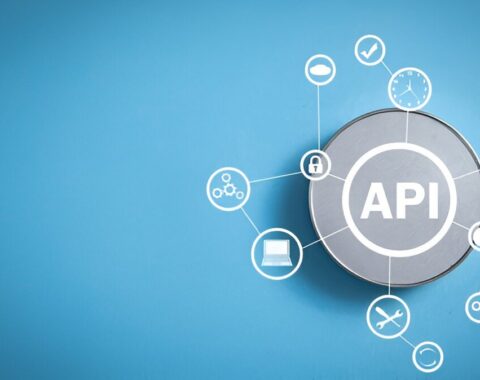
If you’ve ever launched a tech product only to see adoption stall or features pile up without direction, you know the pain. Going AI-first makes roadmap planning even trickier—but also more rewarding. An AI-first product roadmap doesn’t just include features; it embeds intelligence from the start. The goal? Move from concept to real enterprise adoption with clarity, control, and scalable impact.
In this blog, you’ll learn how to craft a roadmap that marries custom software development, digital transformation ambitions, AI-first ERP vision, and scalable software solutions. We’ll walk through how to place AI in your architecture, validate use cases, stage growth, and accelerate adoption across users. You’ll see how cloud-based enterprise applications, mobile app development for businesses, and integrating AI into your core systems can converge into one strategic plan. By the end, you’ll know how to lead your AI-product journey in a way that gets buy-in, delivers value early, and scales deep into your organization.
Laying the Foundation — From Idea to AI Strategy
Define your vision and strategic anchor
Before tech steps in, you need clarity on why AI matters for your business. Maybe you want to automate repetitive tasks, augment decision-making, personalize user experiences, or detect anomalies. Map these goals to business KPIs—cost reduction, revenue lift, retention. Use frameworks like Gartner’s AI roadmap workstreams to align use cases to strategy.
Assess your current state
What systems, data, and infrastructure do you already have? If you rely on legacy platforms, disconnected data silos, or weak integration, your AI roadmap needs to include remediation. Many enterprises succeed only after they modernize their data pipelines first.
Choose prioritized AI use cases
Don’t try to build the entire AI stack in one go. Instead, pick a few high-potential, measurable use cases (predictive analytics, recommendation engines, intelligent automation) that can show impact quickly. Later, you can expand into more complex patterns.
Define architecture and technical guardrails
Decide early whether AI modules will be embedded in your AI-first ERP, live in microservices, or run as separate inference layers. Plan for model ops (versioning, retraining), data governance, APIs, and modular systems so that change is manageable.
How Custom Integrations and Technology Stack Propel Adoption
Build modular, iterative releases
A rigid “big bang” release rarely works with AI products. Instead, release pilot versions, test in a few domains, gather feedback, and iterate. In custom software development, that means building feature modules you can turn on/off, retrain, or replace.
Align with cloud-based enterprise applications
Your AI roadmap should assume scalable infrastructure. Using cloud platforms (AWS, Azure, GCP) gives you elastic compute, storage, and services (ML pipelines, serverless) so your AI modules can grow without rewriting your core app.
Ensure cross-platform and mobile readiness
Many enterprise users access systems via mobile apps. So your roadmap should consider mobile app development for businesses embedding AI in mobile flows (e.g. offline inference, lightweight models). This makes adoption stickier.
Use feedback loops and data from early users
Every iteration should collect real usage data. Where do predictions fail? Which users ignore the feature? Adapt. This kind of feedback-driven growth is essential for trust in AI.
Govern and monitor ethically
As adoption grows, you’ll need explainability, bias checks, drift detection. This matters especially in regulated industries. Build in monitoring dashboards, alerts, and audit trails as integral parts of your roadmap.
Roadmap Stages for Building an AI-First Product
1. Strategy & Planning
Your first step is getting the strategy clear. Define the exact business problems AI should solve, audit your existing systems, and evaluate data readiness. From there, create a vision document and prioritize your AI backlog. This stage ensures that your roadmap has a strong anchor before you start building.
2. Pilot & Proof-of-Value
Instead of going big on day one, start with a pilot. Build minimal ML models, deploy them to a limited user group, and measure results against your KPIs. At this stage, your goal is to prove the value of AI in a controlled environment. This also helps secure stakeholder buy-in.
3. Expand & Scale
Once your pilot proves successful, expand your use cases and integrate AI more deeply into your systems. Add monitoring and retraining workflows, and refine your models using real-world data. This phase is about making AI reliable and scalable across business units.
4. Enterprise Adoption
The final stage is rolling AI out across the organization. This isn’t just about technology—it’s about people. Focus on change management, employee training, governance, and ROI tracking. By embedding AI into daily workflows, your roadmap moves from isolated wins to full business transformation.
Building an AI-first product roadmap is more than picking models. You must design from vision through adoption, align with custom software development, enable digital transformation, and embed AI inside scalable software solutions and enterprise apps. When you do it right, you don’t just launch a feature—you transform your business.
If you’re ready to bring AI into your product future, Pexaworks can partner with you—helping architect, build, and scale your roadmap from idea all the way to enterprise adoption. Let’s talk about your next bold move.
In a digital world growing more complex by the day, Pexaworks stands out by doing more than solving problems — we anticipate them. Our commitment to AI-first solutions, user-centric design, and cloud-powered scalability ensures that the tools we build not only meet today’s needs but are ready for tomorrow’s challenges. Whether you’re an SME aiming for rapid growth or an enterprise seeking transformation, Pexaworks is your partner for meaningful, measurable impact.
Explore how we can drive your vision forward together by visiting https://pexaworks.com/


